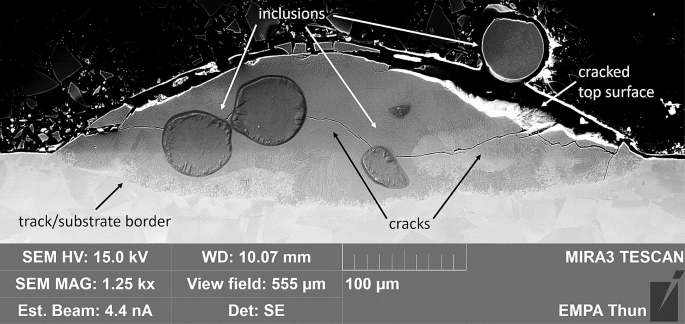Laser metal deposition of titanium on stainless steel with high powder flowrate for high interfacial strength
Abstract
Direct joining of titanium and stainless steel 316 L with a strong interface is very challenging due to the formation of the brittle intermetallic compounds FeTi and Fe2Ti in the intermixing zones and to the high residual stress induced by the mismatch of the thermal expansion coefficients. In this bimetallic directed energy deposition study, firstly, deposition of Ti on stainless steel was carried out using conventional process parameter regime to understand the interfacial cracking susceptibility and then a novel high powder flowrate approach is proposed for controlling the dilution and constraining the intermetallic phases forming at the interface. The influence of high temperature substrate preheating (520 °C) on the cracking susceptibility and interface strength was also investigated. The deposited Ti samples and their interfaces with the 316 L substrate were characterized with optical microscopy, scanning electron microscopy and energy dispersive X-ray spectroscopy to investigate the geometry, microstructures and chemical compositions in relation to the cracks. The high powder flowrate deposition of Ti on stainless steel 316 L results in an extremely thin dilution region (~ 10 μm melt pool depth in the substrate) restricting the formation of the intermetallic phases and cracks. The ultimate shear strength of the interfaces of the crack free sample was measured from cuboid deposits and the highest measured strength is 381 ± 24 MPa, exceeding the weaker base material pure Ti. The high interfacial strength for high powder flowrate deposition is due to the substantial attenuation and shadowing of the laser beam by the in-flight powder stream as demonstrated by the high-speed imaging resulting in an extremely small dilution region.


 求助内容:
求助内容: 应助结果提醒方式:
应助结果提醒方式:


